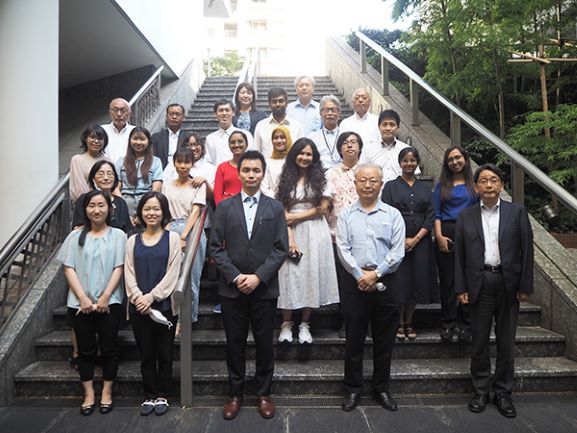Events
“Research Life in Japan” Showcased Splendidly
On July 23rd, the 5th SSC Japan Meeting “Research Life in Japan” was held in hybrid style from a conference room at Tokyo Green Palace and through the Zoom platform. The event consisted of two sessions. Part 1 was a panel discussion by members who are now seeking higher degrees in Japan. In Part 2, SSC Japan welcomed two professionals from Kochi Medical School who are spearheading top-tier research in Japan. The event’s main moderator was SSC Japan Head Coordinator, Dr. Lai Hung Wei who is now a Senior Scientist at Kochi University’s Center for Photodynamic Medicine (CPDM). Dr. Lai came up with the whole concept of this event.
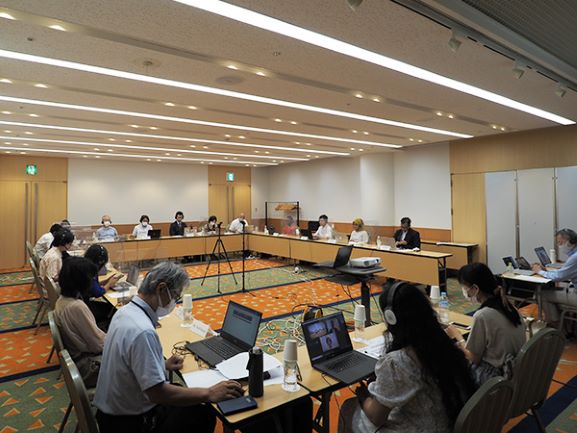
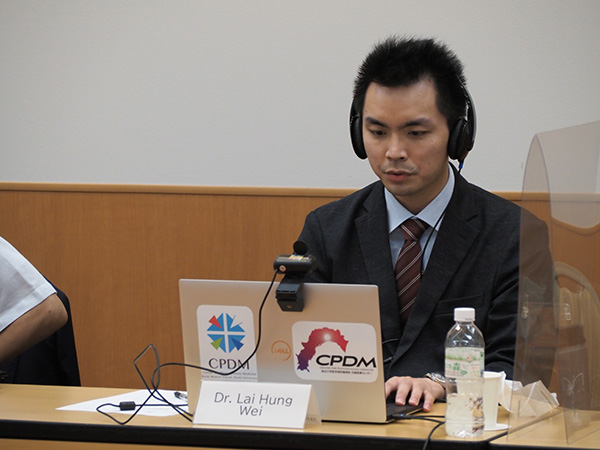
Opening the event was Mr. Koda Akira, the Vice President of Japan Science and Technology Agency (JST). He thanked Dr. Lai for proposing this event. Mr. Koda hoped that “our expanding network of talented human resources will inspire new cooperation in the future.”
Part 1: “A Real-Life Sharing Session by Alumni Across the Archipelago”
This session invited a panel of alumni across Japan, to speak about their experiences, as well as the differences between Japan and their home countries in terms of research and education. The discussion was facilitated by Mr. Johannes Nicolaus Wibisana, a PhD student at the Okinawa Institute of Science and Technology (OIST). The panel conveyed useful advice to prospective students who may be doing research in Japan. Below are their observations and advice:
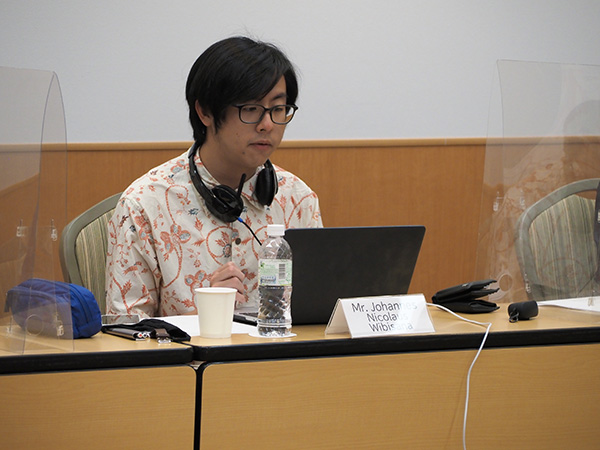
- Ms. Nusrat Omar suggested to start studying Japanese before your arrival as Google Translate is not enough to communicate about your studies with lab colleagues and professors. Learning Japanese can help achieve your academic goals more smoothly, and can also help in building relationships.
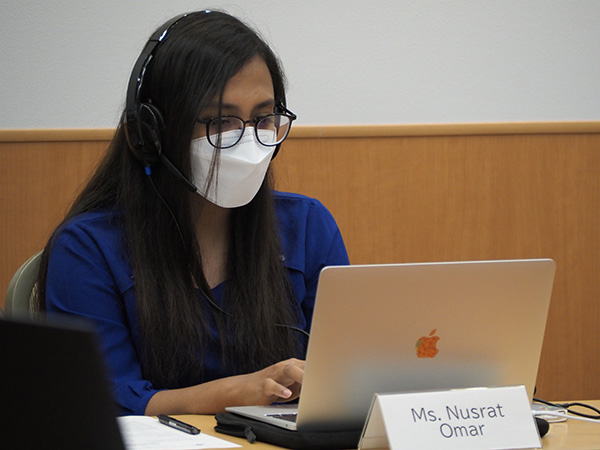 Ms. Nusrat Omar
Ms. Nusrat Omar - Mr. Rahul Maroju commented that at first, it may be difficult for people with dietary restrictions (vegetarianism, halal and others). Although there are wide varieties of food available in Japan, the simplest solution is to cook for yourself. It is also beneficial to ask Japanese friends to come with you to the supermarket to help you confirm unfamiliar foods.
 Mr. Rahul Maroju
Mr. Rahul Maroju - According to Dr. Bidisha Dey (India), field work was cancelled and laboratories were sporadically shut down during the early COVID-19 days. Students had difficulty publishing their results, but, thanks to the support of supervisors, she was able to graduate successfully. In terms of being a researcher in Japan, studying Japanese is quite necessary. As Japanese work culture tends to put a lot of pressure on workers, it is important to keep an eye on your health.
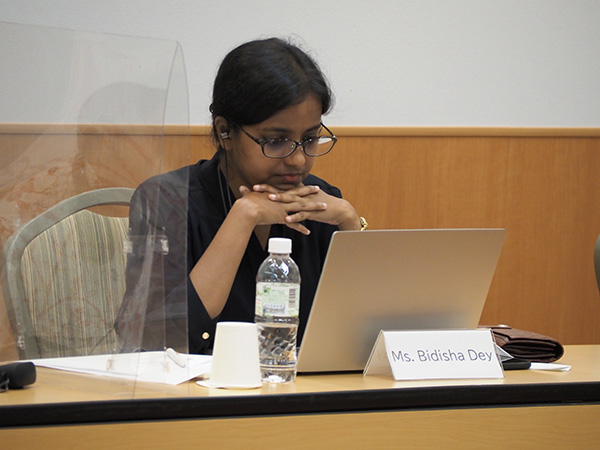 Dr. Bidisha Dey
Dr. Bidisha Dey - Mr. Thant Zin Tun (Myanmar) who researches microplastics, observed that there are significant differences in access to technology, which ultimately has an impact on developing countries’ ability to collect data and implement infrastructure systems. By way of example, Japan has a good waste management system.
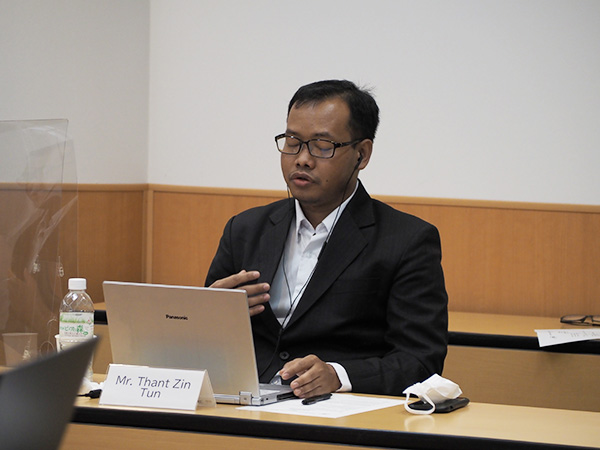 Mr. Thant Zin Tun
Mr. Thant Zin Tun - Ms. Diah Anngraini Wulandari (Indonesia) commented that industry-academia-government collaboration is well-rooted in Japan. Even routine processes such as ordering scientific materials in Japan is quite convenient, as opposed to the month-long wait in Indonesia. To note, Japanese researchers tend to work 10-12 hours per day, while Indonesian researchers typically work eight hours.
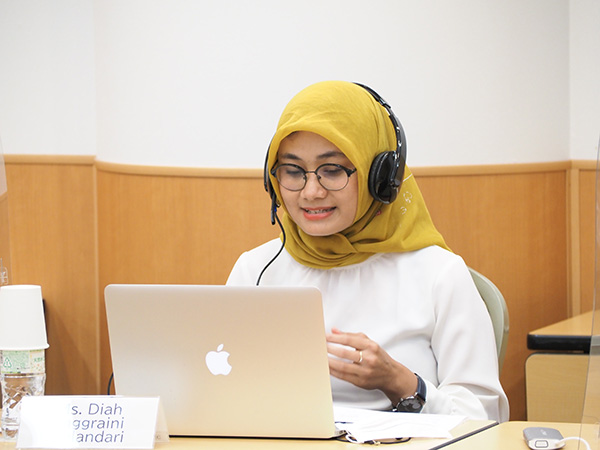 Ms. Diah Anngraini Wulandari
Ms. Diah Anngraini Wulandari - Ms. Swetha Soundararajan (India), mentioned some differences for upcoming graduates. In India, companies come to university departments to interview and provide direct job placement opportunities. There is even a special period for placement preparation. In Japan, the job quest is mostly up to each student. There are both pros and cons to the systems in each country.
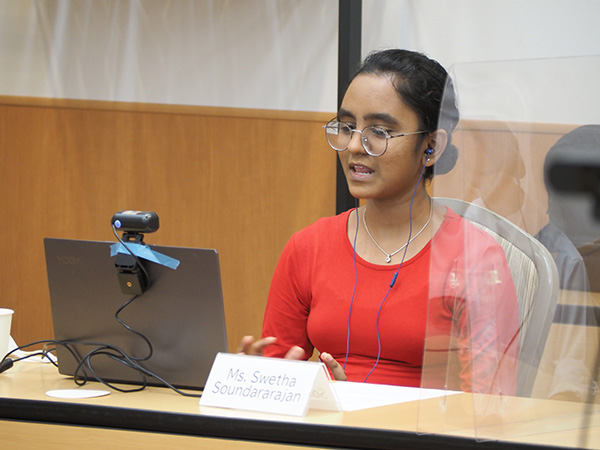 Ms. Swetha Soundararajan
Ms. Swetha Soundararajan - Dr. Nguyen Nhu Bao Chinh (Vietnam), who works in the field of radio-chemistry after completing his PhD in Japan, felt his study and work experiences were enhanced by the “Ho-Ren-So” style of communication: “Hokoku” (to report), “Renraku” (to pass information) and “Sodan” (to consult). This is particularly important in his work, which can carry the risk of radiation exposure.
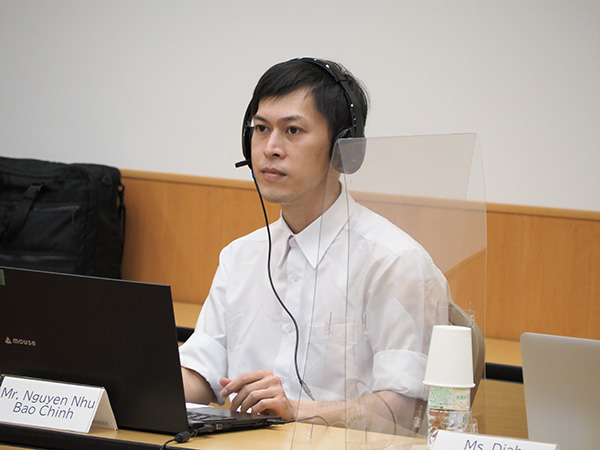 Dr. Nguyen Nhu Bao Chinh
Dr. Nguyen Nhu Bao Chinh
Q&A Session
Q: What is the best way to contact a professor who could be your supervisor?
A: Researchers are very busy people. Patience is key — you should begin reaching out well ahead of time, and not to expect a quick response. Applicants should only write an email to specific professors who have something to do with their intended research field. If you don’t receive a reply after two weeks or so, then you can write a follow-up email or move on to another professor.
Q: How can one get a PhD supervisor’s attention?
A: In the case of panelist Ms. Diah Anngraini Wulandari, she prepared her proposal ahead of time, and attached her CV and IELTS score certifications to her initial email. After the professor replied, she discussed her research proposal and worked with the professor to improve that proposal. Following that, the professor offered scholarship suggestions (MEXT, JICA or JASSO).
Q: How can one actually get scholarships for studying in Japan?
A: Although it can take several months, anyone can apply for the MEXT scholarship, either through one’s target university or through the Japanese embassy in their home country. The embassy processing times are different in each country and tend to be slower than university tracks. Non-MEXT scholarships by various foundations also exist. Some of them require university recommendation letters and most of them must be applied after your arrival in Japan. The JASSO website has more information. The Sakura Science Program (SSP) itself does not offer research grants. It focuses on short-term exchange, collaborative research and/or training programs only.
Q: Are there any recommendations on learning Japanese?
A: MEXT scholarship recipients will have access to an intensive learning course. With or without it, all learners need to study every day, and not only speaking. Reading books and watching TV are also key parts of fluency. Improvement comes slowly, but it does come with dedicated effort.
Should anyone have more questions, the Sakura Mentors are ready to reply to help you.
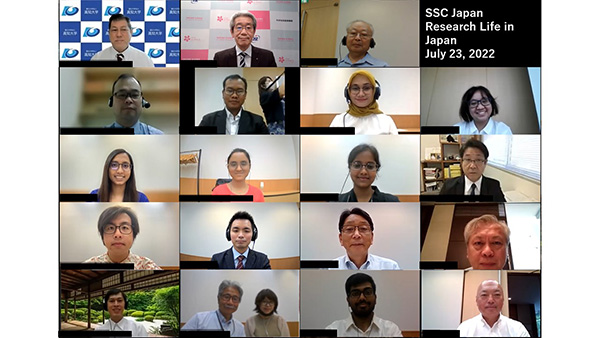
Part 2: “Top-Tier Research in Japan”
This session, hosted by Dr. Lai Hung Wei, invited medical professionals from the Center for Photodynamic Medicine (CPDM), Kochi Medical School to present their work by using cutting-edge technology to cure cancer with light. Dean of Kochi Medical School, Prof. Furihata Mutsuo, gave his opening speech on introduction of Kochi Medical School and its prospects in contributing to the society. Prof. Inoue Keiji, the Director of Kochi Medical School’s Department of Urology and the Center for Photodynamic Medicine (CPDM), introduced “5-aminolevulinic acid mediated photodynamic diagnosis”, or ALA-PDD in short. This technique which was developed and pioneered by Kochi Medical School, uses special wavelengths of light (PDD) in conjunction with a special medicine (ALA) to identify cancerous tissue. Using video footage obtained during surgery, Prof. Inoue demonstrated that tiny bladder tumors, which are generally naked to human eye, emit red fluorescence using this treatment, allowing medical surgeons to identify and removed the cancerous tissue easily using an electric scalpel. Furthermore, Prof. Inoue explained that the ALA-PDD surgery is safe, with some occasional mild side-effects compared to other forms of cancer treatment. He expressed his welcome to interested students to apply to do research in Kochi University.
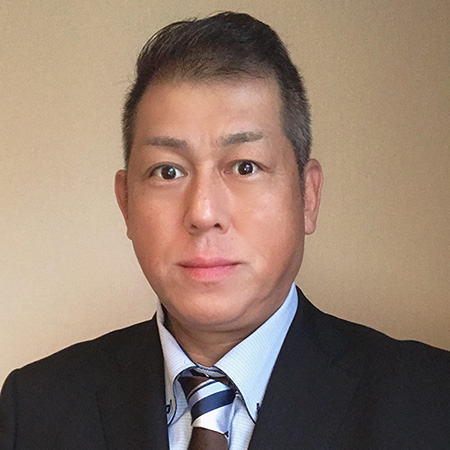
The second speaker, Dr. Fukuhara Hideo, a urologist from Center for Photodynamic Medicine (CPDM) and Department of Urology, gave a presentation on the clinical applications of photodynamic diagnoses of bladder cancer using 5-ALA in Japan. He explained that this therapeutic method has attracted attention as an auxiliary diagnostic tool in cancer. Dr. Fukuhara showed how ALA-PDD could assist surgeons to observe small and flat lesions which is very difficult to detect using normal light. Since this form of diagnosis is much more effective at detecting cancers and reducing the rate of recurrence, it may help reduce mortality in bladder cancer patients, which continues to increase annually in Japan.
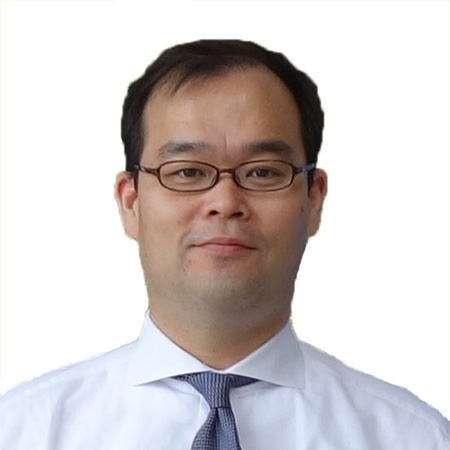
Q&A Session
Q: How can a foreign researcher conduct clinical research in Japan?
A: There are two ways to do so. The first is to be enrolled into a research institution in Japan. The second is by conducting collaborative research or joining short term exchange programmes.
Q: Can photodynamic therapy be applied to different types of cancer?
A: Photodynamic technology has been used in several other cancer types, such as brain, lung and skin cancer. They are well-established treatment regimen for treating various type of cancer in countries such as Japan, USA and Germany.
Q: Would adding the 5-ALA compound change the cancer cells in any other ways?
A: As the key component in ALA-PDD, 5-ALA will accumulate as protoporphyrin IX (PpIX), a light-sensitive compound, only in cancer cells but not in normal cells. This interesting phenomenon ensure minimal side effect to normal surrounding cells.
To close the event, Mr. Ito Sotaro, Director at the Department of Planning and Management, Sakura Science Program Headquarters, thanked the panelists, coordinators, and presenters. He looked forward to the strengthening of networks in the wake of today’s successful event. He also thanked Mr. Okimura Kazuki, the founder of the Sakura Science Program, for attending the event.
The secretariat would again like to thank Prof. Inoue, and Dr. Fukuhara who enlightened us with their ongoing research, and all panelists, moderators and coordinators who travelled far to be at the venue.
